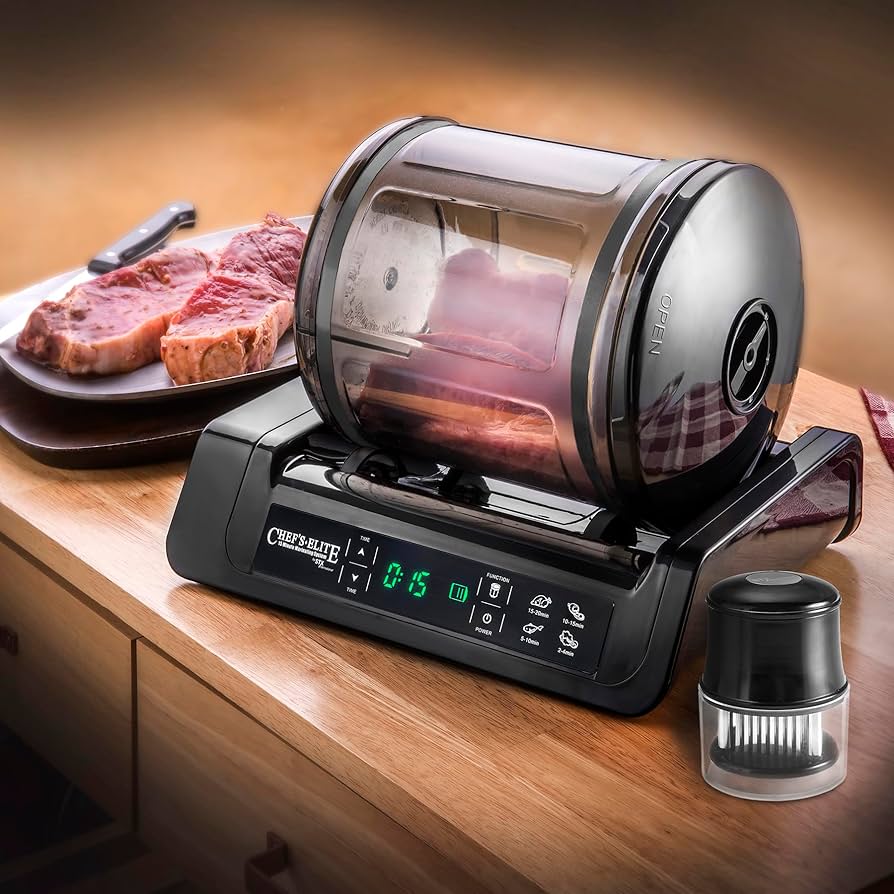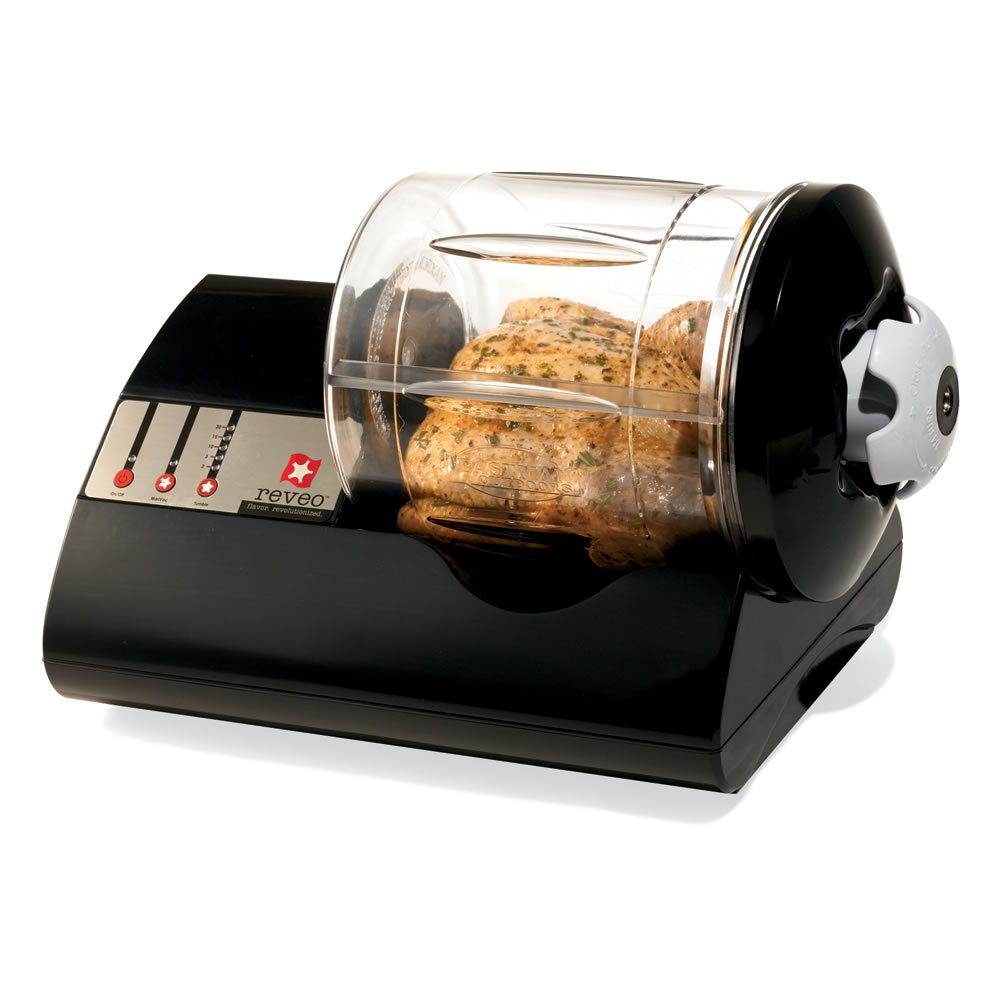10 years of experience as a food machinery equipment manufacturer
10 years of experience as a food machinery equipment manufacturer
In the realm of food preparation, particularly meat processing, achieving consistent and deep marination is a cornerstone of flavor development and texture enhancement. Traditional methods, while time-honored, often require extended periods and may not always result in uniform marinade penetration. Addressing these challenges, the tumbling vacuum meat marinator has emerged as a significant technological advancement for both commercial kitchens and food processing facilities.

A tumbling vacuum meat marinator is a specialized piece of equipment designed to accelerate and improve the marination process. It combines two primary actions: mechanical tumbling and the application of a vacuum. The core components typically include a rotating drum, a vacuum pump, and a control system. Meat products, along with the marinade, are placed inside the drum. The machine then draws air out of the drum, creating a vacuum environment, while simultaneously rotating or tumbling the contents.
The science behind its efficacy is multi-faceted. The vacuum environment plays a crucial role. By removing air from the drum and, importantly, from within the pores and intercellular spaces of the meat, it causes the muscle fibers to expand slightly. This expansion creates more pathways for the marinade to penetrate deeply and quickly when the vacuum is released or as the tumbling action progresses. Furthermore, the absence of air pressure allows liquids (the marinade) to be drawn more effectively into the meat structure.
The tumbling action complements the vacuum process. As the drum rotates, the meat pieces gently rub against each other and the drum’s baffles (internal fins or paddles). This mechanical agitation helps to further break down tough muscle fibers, making the meat more tender. It also ensures that all surfaces of the meat are consistently exposed to the marinade, leading to a more uniform distribution of flavor and moisture. The combination of these two actions – vacuum and tumbling – creates a synergistic effect that dramatically reduces marination times compared to static soaking.
The adoption of tumbling vacuum meat marinators offers a range of tangible benefits for food businesses aiming for quality and efficiency.
Accelerated Marination Times: This is perhaps the most significant advantage. Marination processes that might take many hours or even days with traditional methods can often be completed in a fraction of that time, sometimes in as little as 20 to 60 minutes, depending on the product and desired outcome. This speed allows for greater production flexibility and quicker turnaround.
Enhanced Flavor Penetration: The vacuum and tumbling actions work in concert to drive marinades deep into the muscle tissue, not just coating the surface. This results in a more intensely flavored product through and through, providing a superior eating experience.
Improved Tenderness and Texture: The mechanical action of tumbling helps to break down collagen and muscle fibers, leading to a more tender final product. The marinade, now deeply absorbed, also contributes to a juicier texture by increasing the meat’s moisture content.
Increased Product Yield: As the meat absorbs more marinade, its overall weight increases. This can lead to a higher yield, which is a critical factor in the profitability of commercial food operations. While regulations on added water content vary, the inherent moisture uptake is a natural benefit.
Consistency and Uniformity: Automated control over tumbling speed, vacuum levels, and marination time ensures that each batch of meat is processed under identical conditions. This leads to a highly consistent product in terms of flavor, tenderness, and appearance, which is vital for brand reputation and customer satisfaction.
Reduced Marinade Usage: Because the marinade is absorbed more efficiently and distributed evenly, businesses may find they can achieve desired flavor profiles with less marinade compared to static methods where much of it remains unused or only superficially coats the product. This can lead to cost savings on ingredients.

Better Food Safety and Hygiene: Tumbling vacuum marinators are typically constructed from food-grade stainless steel, which is easy to clean and sanitize. The enclosed system also minimizes the meat’s exposure to airborne contaminants during the marination process, potentially improving overall food safety.
Tumbling vacuum meat marinators are versatile and find applications across various segments of the food industry. They are widely used for a variety of meat types, including poultry (chicken, turkey), pork, beef, lamb, and even seafood.
In restaurants and catering businesses, these machines allow chefs to quickly prepare flavorful and tender meats for their menus, even on short notice. Butcher shops can use them to offer value-added marinated products to their customers, expanding their product range. Small to medium-scale food processors who produce items like marinated chicken wings, beef jerky, sausages, or pre-marinated cuts for retail also benefit significantly from the efficiency and quality improvements offered by these marinators.
When considering the acquisition of a tumbling vacuum meat marinator, several factors warrant attention. The capacity of the drum is a primary consideration and should align with the business’s production volume. The quality of the vacuum pump and the integrity of the seals are crucial for achieving and maintaining the necessary vacuum levels. Construction material, typically stainless steel for durability and hygiene, is also important.
The control system is another key aspect. Modern units often feature programmable controls, allowing users to save specific recipes or marination cycles for different products. This ensures repeatability and ease of use. The design of the internal baffles within the drum can also influence the tumbling action and its effectiveness. Finally, ease of cleaning and maintenance should not be overlooked, as these factors contribute to the machine’s longevity and operational hygiene.
In conclusion, the tumbling vacuum meat marinator represents a sophisticated tool that enhances the art and science of meat preparation. By leveraging the principles of vacuum pressure and mechanical action, it offers substantial improvements in marination speed, flavor penetration, product tenderness, and consistency. For businesses and culinary professionals looking to elevate their meat products and optimize their operational efficiency, this technology provides a compelling solution, transforming a traditionally time-consuming process into a rapid and highly effective one.
